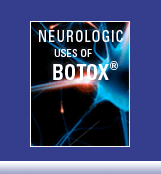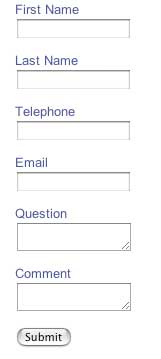![]()
 |
|
External Neuromodulation of Migraine Headache
There have been a recent plethera of external neuromodulation devices for both acute treatment and preventative treatment of migraine headache. The number of devices is shocking (pun intended). This article covers the five devices that are available as of 2022 - GammaCore Sapphire, Cefaly, Relivion, Nerivio and sTMS. Gammacore and Cefaly are both approved for acute and prevention of migraine headaches. The others are currently approved only for acute treatment.
GammaCore® Sapphpire is a device that the user placed over their vagus nerve in the neck in order to stimulate the underlying vagus nerve. To stimulate the vagus nerve, the user turns the device on, places it on their neck, and ramps up the intensity until they feel a pulling on their lip. It will run for 2 minutes from the time that it is turned on and then will automatically turn off. This is referred to as a stimulation cycle. Gammacore is used for a wide variety of headaches including migraine, cluster, and paroxysmal hemicrania. For migraine, there is data about treatment of acute migraine pain and migraine prevention which is discussed here.
Acute therapy was based upon a double blind, sham controlled trial called the Presto Trial. The term double blind means the participants of the trial and those gathering the data did not know whether they were using a device that was the real device or a very clever sham device. The sham device worked more like a regular tens unit and caused local discomfort at the site. The treatment was one stimulation cycle on each side, wait 15 minutes and repeat. At 2 hours, after data was collected, another stimulation cycle on each side could be repeated. Pain free (1st use) for active treatment vs sham was 12.7% vs 4.2% at 30 minutes, 21% vs 10% at 60 minutes, 34% vs 19.7% at 2 hours. 50% responder rates (pain mild or pain free for more than 50% of headaches treated) was 47.6% vs 32.3% at 2 hours.
For comparison, pain freedom at 2 hours for Sumatriptan/naproxen sodium, vs Sumatriptan vs naproxen sodium vs placebo was 24%, 15%, 10%, and 7% respectively.
For prevention, we have one study that demonstrates significant reduction of headache frequency but this occurs relatively slowly. Therefore, Dr. Loftus would use it for prevention if there was no faster acting option available or if the patient was already getting good reslts from using GammaCore for acute therapy.
At the current cost of about $150/month - it is affordable to many patients. It is not generally covered by insurance. The GammaCore has the least amount of interference with work or other activities compared to the other devices. For prevention, Dr. Loftus has patients using the GammaCore for 5-7 minutes 4 times daily and for acute therapy it is used for about 5 minute at the onset of a migraine then after 15 minutes, treatment is started again for another 5 minutes.
The Cefaly device is approved for acute treament of migraine as well as prevention of migraine headaches.. The devices work by stimulating the left and right supraorbital and supratrochlear nerves. There is one program for acute headache and a different program for headache prevention. Unlike the other devices in this article, the patient buys their device (up to $390 - 60 day no questions asked returns allowed) and then only have to spend for the electrodes (about $25 - $50 per month).
For acute use, we have limited open label data that indicates about a 3 point drop of the VAS score at one hour. Active treatment was between 7mA and 16 mA, 100 Hz, 250 microsecond pulse width. In this study, 30 patients with acute migraine were treated with Cefaly one hour acute treatment protocol. At one hour (end of stimulation period), the average pain score was decreased by 57% from baseline and this was mostly maintained at 2 hours (53%). A 10 point visual analog scale was utilized and the starting score average was about a 5.7. Given typical acute migraine studies have used a 4 point scale, it is hard to compare this to more typical migraine treatments.
A double blind, sham controlled, study has also been published. Acute therapy is essentially the same as the open label trial. Sham stimulus was 1 HZ, pulse width of 250 microseconds and a max current of 5 mA. In this study, there was a statistically significant 59% vs 30% reduction in pain on the visual analog scale compared with baseline for the treated group vs the sham group at one hour. Pain freedom for the treated group was statistically significantly better than sham at 1 hour (32% vs 6%) but not two hours (19% vs 8%, P value .136). The use of the VAS instead of a more typical migraine scale makes comparisons to other treatments impossible. What one can say is there is a group of patients who respond well to acute Cefaly stimulation and other than local discomfort, is essentially side effect free.
For preventative use, Cefaly has been studied in a double blind, sham controlled, migraine prevention trial in Belgium. The sham was accomplished by delivering a stimulus with a maximum intensity of 1 mA (vs 16 ma for treatment) for 30 microseconds (vs 250 microseconds for treatment) at 1 HZ (vs 60 Hz). Therefore the sham group treatment was at best 1.6% of the stimulations of the control group but may have been zero percent if the intensity and duration was not long enough to trigger the targeted supratrochlear and supraorbital nerves. There is no mention in the article if the patients could feel the sham stimulation. The mean number of migraine days in the treated and sham controlled arms of the study at baseline was 6.54 vs 6.22. Although chronic migraine was not explicitly excluded, patients having a large number of tension headache days were excluded so it is likely that there were no chronic migraine patients in the study. The migraine days at month 3 were reduced by 30% in the treated group and 5% in the sham group. The findings were statistically significant for the treated group against baseline. It was not quite significant when comparing one arm against the other (the primary specified outcome). Other outcomes – 50% responder rate (38% vs 12%), monthly migraine attacks, monthly headache days, and monthly acute migraine drug intake were all reduced. Patient satisfaction rate was 71% in the treated group. Other than fatigue after therapy and local discomfort, the treatment is well tolerated.
While the response to Cefaly appears to be modest, given the relatively low ongoing cost, the Cefaly device is certainly reasonable to try both for acute migraine and migraine prevention. During cefaly usage, most patients have to lie quietly. While this is not problematic for a 20 minutes prevention period each night, it can be somewhat problematic for the 60 minutes acute therapy treatments when they are needed. Some patients will wait to do their Cefaly acute treatments and then have a headache that is harder to treat.
Nerivio®, made by Theranica, is an electronic device that delivers current to a nerve in the arm. The device is applied to the arm and an app on your smart phone is used to connect to it via Blue Tooth to activate it. The cost of the device is $49 and each device has 12 treatments. Each treatment lasts about 45 minutes. It is not as cheap as a $1-$2 generic triptan pill but is equivalent to the cost the many triptan treatments at $5 per headache. This price is well under the cost of the newer migraine treatments. Despite this, insurance coverage is infrequent. It is currently approved for only acute therapy. While the treatment takes 45 minutes, the application to the arm generally allows for significant activity while using it. For this reason, this and the Gammacore devices are preferred for acute therapy for those that have problem stopping work for a significant amount of time.
Relivion® is an electronic device that delivers stimulation to both the supraorbital nerve (like Cefaly) as well as the Greater Occipital Nerve. It is FDA approved for teatment of acute headache. The treatment cycle is about 40 minutes. During the time, you are wearing the halo device and you are effectively unable to work while wearing it. The cost is relatively modest at $75/month for unlimited use. It is an excellent option for those patinets that do not need prevention or for those patients for whom other cheaper acute options have failed.
The sTMS is a device that delivers a 0.9 Tesla strength magnetic pulse each time it is activated and the user holds it against the back of the skull with the target being the occipital lobe. Dr. Loftus generally uses it for patients that have a large percentage of their migraines with aura.
The sTMS device has been shown effective in treating patients during the acute phase of migraine with aura during double blind, sham controlled, randomized trial. The study was designed for the patient to treat during the aura phase. The primary outcome was pain freedom at 2 hours which met statistical significance (39% vs 22%). Migraine with aura relatively uncommon compared to Migraine without aura.
The sTMS device has not been tested against Sham for migraine prevention in those patients that had at least 30% of their migraines with aura. Despite being technically the easiest neuromodulation device to develop a sham control, all we have is an open label observational study, called Espouse where patients kept a one month diary, and were then treated and followed for 3 months. The treatment protocol was 2 pulses, wait 15 minutes, followed by 2 more pulses twice daily as well as the ability to treat acute headaches with 3 pulses, wait 15 minutes, retreat with 3 pulses if desired, wait 15 minutes and retreat with another 3 pulses if desired. On average, patients entering the study had an average of 10 headache days per month and by month 3 were having about 3 less headache days per month. 46% of patients had a greater than 50% reduction in headache days. Acute medication usage decreased by 3 days per month as well.



